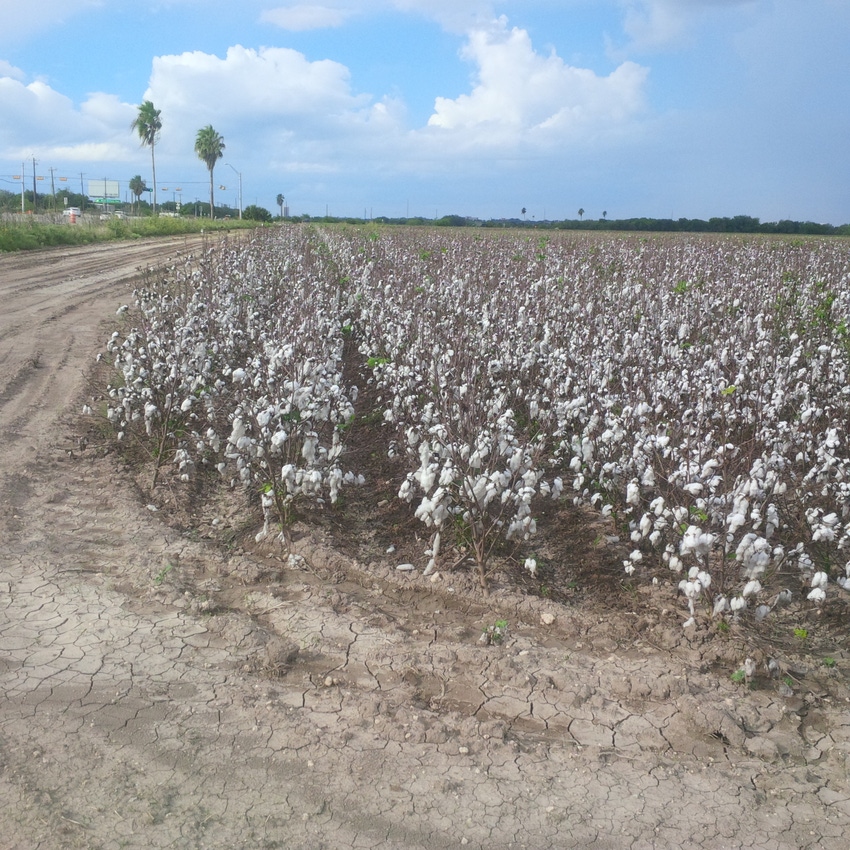September 19, 2018

How much rain is enough?
That’s a question a lot of farmers and ranchers are asking across the mid-coast region of Texas this week after a tropical low-pressure system dropped anywhere from nine to 24 inches of rain over a good portion of the Texas Coastal Bend in the last six days flooding roads, highways and fields.
“I can’t tell you exactly how much rain I got on my pasture,” reports Bobby McCool, Texas AgriLife County agent in San Patricio and Aransas counties. “I have a six-inch gauge and I had to empty it three times, and I’m not sure how much rain flowed over the top of the gauge before I emptied it each time.”
McCool’s rain gauge is located near Woodsboro, about 20 miles from Rockport, an area that suffered the brunt of wind storm damage from Hurricane Harvey that roared across the area late last August.
“I can tell you we had a lot of moving water across the area, some of it is still moving and fields remain flooded.”
Fortunately for area cotton farmers, McCool says about 98 percent of cotton producers have completed their harvest. The other two percent represent fields where cotton was replanted.
See, The pain of loss is hard to shake
“It’s too early to tell how bad that cotton fared in this rain event, but some of the cotton that was still in the field had been defoliated, and as much rain as we received it’s probably pretty safe to say will show some signs of damage, at least in the quality. Now, it’s wait and see.”
According to the National Weather Service Weekly Regional Rainfall map published on Sunday, Sept. 16, the largest accumulation of rain in the Coastal Bend was recorded in Aransas County, slightly more than 21 inches. In nearby Corpus Christi, rainfall amounts ranged between nine inches and 12 inches respectively.
According to meteorologist Dale Nelson in Corpus Christi, while the heavy rains came at a good time for area farmers since harvest operations were almost over in Nueces County, in general terms, producers prefer to stretch the rains over a longer period of time.
“Heavy rains like we received over the weekend will help to improve soil moisture profiles, but farmers are still going to need additional rain in the winter months to have ample moisture for spring planting,” he said.
See, Social media reports show Florence's impact on Carolina farms
Nelson said before September arrived, the region was suffering drought conditions. Reservoirs at Lake Corpus Christi and Choke Canyon, the source of drinking water for Corpus Christi, had dwindled to extremely low levels. But late August rains and heavy rains in September, thus far, should result in the combined reservoir levels to top the 50 percent mark by the end of the week.
“That’s a major improvement and some really good news for half a million people who depend on the lakes for their drinking water,” he said.
By early Sunday, the National Weather Service in Corpus Christi reported the annual rainfall rate for Nueces County had reached 30-inches. The annual average is slightly more than 31 inches.
McCool said summer drought conditions were so bad that grain crops across the Coastal Bend were “terrible.”
“We didn’t make a lot of grain as a result, and what we did make wasn’t the best quality with a few exceptions. As far as cotton is concerned, in spite of heavy rains during the early part of the crop year that caused some lodging and replanting, and a strange wind storm in June that destroyed some crops, we ended up making a bale-and-a-half to two-and-a-half bales of cotton on average,” he said.
As to whether or not any late-planted cotton still in the field after the weekend’s heavy deluge can be salvaged, McCool says that depends on how fast fields dry out. But with another round of thunderstorms in the forecast for the upcoming weekend those hopes could be dampened if fields remain too wet to harvest in the days ahead.
You May Also Like




